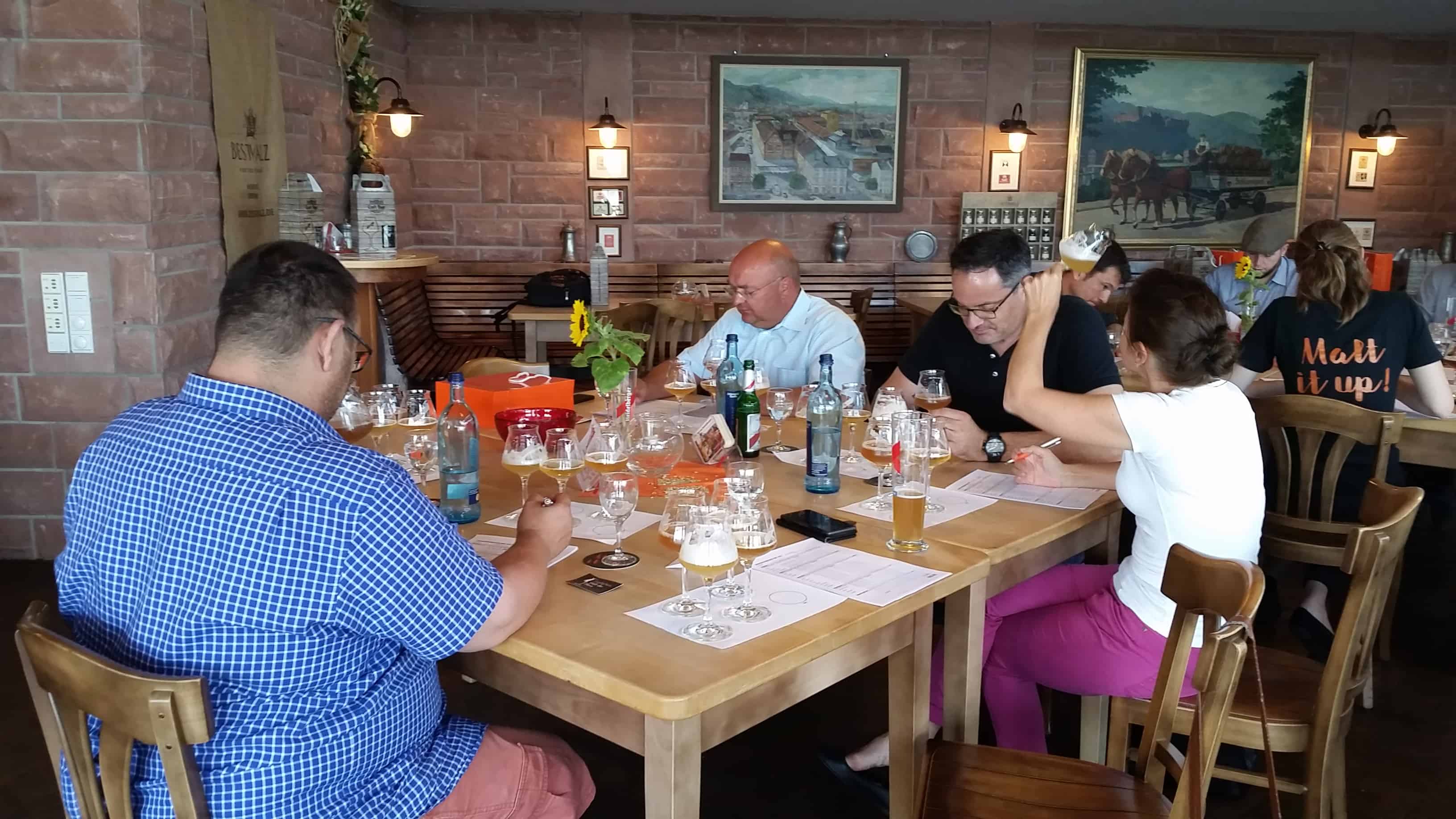The atmosphere in the tasting room at Heidelberger Brauerei is extremely focused: People sit at two tables with five long-stemmed tasting glasses and an assessment sheet in front of them. They take a sniff at the beer, take a small swig, hold it up to the light and make notes. Water bottles and bowls of white bread are placed between the glasses. What does all this mean? The members of the jury of BestBrewChallenge 2017 are judging the beers that have been entered into the competition.
Strict conditions for competition and jury
The twelve members of the BestBrewChallenge 2017 jury have the task of tasting and assessing 49 beers and choosing the winners. Naturally, the whole thing is done blind, so that the four women and eight men, most of them master brewers and/or beer sommeliers, can judge the beers without bias. None of them know whether the beer they have just sampled was brewed in Berlin or Brazil and what exactly it is made of. However, all beers have to fulfill certain prerequisites: Whether they are created by a major brewery or a home brewer, they must comprise at least 49 percent BEST Heidelberger, the lightest malt in the BESTMALZ portfolio, and be brewed in accordance with the German Purity Law. This requirement is stricter than in the two previous years: “It means that the beers are more similar this year,” says Berthold Klee, Head of Production and Logistics at BESTMALZ and a member of the jury. Nevertheless, the spectrum is wide, as the different hues in the glasses alone confirm. Lutz Wirsching, Head of Production at Heidelberger Brauerei, says: “There have been no ‘taxing’ beers this year so far.” Taxing beers? What does that mean? Wirsching explains: “When a beer has a very complex flavor, you have to concentrate particularly hard to distinguish the different components.” Even so, a tasting lasting an entire day is naturally exhausting for the jury members.
Neutrality has top priority
How do you stay neutral when you have to sample so many beers? Jury member Nicola Buchner trains beer sommeliers in sensory analysis and brewing technology at Doemens Savor Academy. She regularly carries out tastings as part of her job and explains, “You really have to focus on eliminating any disturbing influences. The beers are colder at the beginning, so I include that in my assessment. Or if the first beer is bitter, for example, that can overlay the taste of the next one. You mustn’t let that bias you. It helps to smell something else now and again – besides drinking and eating the obligatory water and white bread between the beers.” This has the purpose of resetting the taste buds. What is more, the jury tastes beers in groups of five at a time, so they can take a break after each group.
None of the jury members wanted to tell us whether they had found their favorite beer after tasting the first groups. The suspense continues – until 11 September, when the winning beers will be announced at the BESTMALZ booth at Drinktec!

